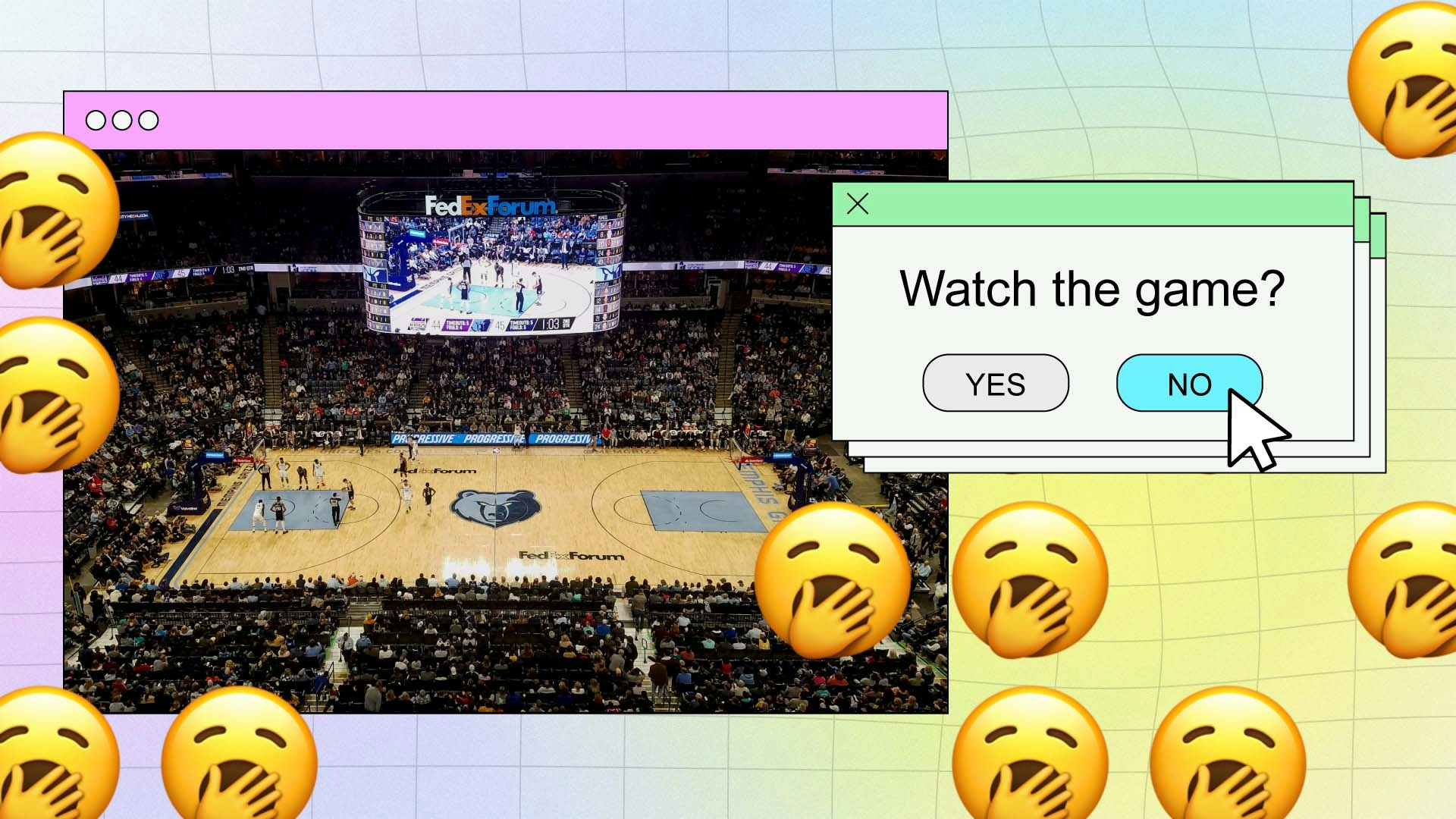Netflix’s ‘Drive to Survive’ Jump-Started Formula One’s Popularity. What’s Next?

Key Takeaways
NASCAR is the most popular motorsport in America, according to U.S. adults, followed by IndyCar and Formula One.
More than 1 in 5 F1 fans (22%) said the Netflix docuseries “Drive to Survive” was a “major reason” they became fans of the sport, while 30% said the same about nearly 18 months ago.
Given F1’s high ticket costs for races and persistent accessibility challenges, it must find creative ways for people to experience and engage with the sport, especially if it wants to attract new audiences.
For our latest sports data and analysis, sign up for our daily briefing.
Amid a dearth of live sports programming during the coronavirus pandemic, Formula One raced into the cultural zeitgeist thanks to a boost from Netflix’s docuseries “Drive to Survive,” which sold the sport to an American audience via compelling storylines, charismatic characters and plenty of speed. Now, the motorsport must figure out how to continue to capitalize on its higher profile.
Despite the Netflix bump, new Morning Consult data shows that F1 still trails other motorsports in popularity according to U.S. adults’ reported viewing habits, as Las Vegas and Austin, Texas, prepare to host major F1 races later this fall.
More than 1 in 3 U.S. adults (36%) said they watch at least a few competitions of the NASCAR Cup Series, the highest share among motorsports properties included in our survey, followed by 29% who said the same for IndyCar. F1 finished third, with 28% of U.S. respondents saying they watch the sport that features Dutch superstar Max Verstappen, fresh off a record 10th consecutive win, as its top driver.
For Motorsports, Americans’ F1 Viewing Is Middle of the Pack
Netflix’s latest season of “Drive to Survive,” released in February, has performed strongly for the streaming service, building on the success of previous installments. But the data suggests it’s likely time for F1 to diversify its strategies for grabbing people’s attention if it hopes to turn curious consumers into actual fans.
Has the F1 docuseries’ ability to drive new fans plateaued?
Since premiering in 2019, “Drive to Survive” has turbocharged F1’s global popularity, especially in the United States during the pandemic, when most live sports ground to a halt.
Today, the show’s continued success over five seasons has translated into greater interest in the sport. More than 2 in 5 self-identified viewers of the series (44%) said they sought out more information about F1 after watching “Drive to Survive,” while 42% said they started watching races, either live or recorded, suggesting the Netflix program piqued many viewers’ interest in the sport.
Still, when it comes to the “Drive to Survive” boost, it’s fair to ask how much gas is left in the tank. This month, Sports Business Journal asked whether F1 has peaked in the United States amid teetering TV ratings. New Morning Consult data only adds fuel to this question.
In July, 13% of U.S. adults said they had watched the Netflix series, compared with 15% in 2022, a slight downtick within the survey’s margin of error. The year-over-year difference is more pronounced among self-identified F1 fans, with 36% of this cohort saying they watched in 2023, compared with 45% in 2022.
‘Drive to Survive’ Is Slowing Down in Driving F1 Fandom
Meanwhile, the share of respondents who said they became fans of the sport in the past year dropped 6 percentage points, from 26% in 2022 to 20% in 2023. In addition, 30% of F1 fans said in 2022 that “Drive to Survive” was a “major reason” they started following the sport, compared with 22% this year.
U.S. television ratings for F1 have also experienced a slight dip. For example, viewership of this year’s Miami Grand Prix dropped 24% from its inaugural race a year ago. And ESPN’s Formula One broadcasts are averaging 1.24 million viewers in 2023, compared with a record high 1.3 million in 2022. Some of this downtick may be due to Verstappen’s dominance, but either way it’s further evidence that the sport needs to identify more ways to accelerate its long-term growth.
How F1 can fast-track growth
From “Drive to Survive,” which will release its sixth season next year, to the “Schumacher” documentary, also on Netflix, there’s no shortage of binge-worthy F1 content. But in the post-pandemic era, there’s more all-access programming on streaming services, not to mention more options for live sports, than any fan can consume.
Netflix, which reportedly submitted a bid for Formula One’s U.S. media rights but lost out to incumbent ESPN, could try to catch lightning in a bottle again by doubling down on its F1 content, though that may be difficult if it cannot find a unique and compelling narrative angle to drum up interest among both fans and nonfans.
So what can F1 do to attract more people to the sport? Morning Consult data shows there’s no silver bullet for gaining new fans, so it will likely require wide-ranging efforts.
About one-third of U.S. adults (32%) said they would be either “very” or “somewhat” interested in F1 if there were more American drivers. (The last U.S. driver to win an F1 race was Mario Andretti in 1978.) The same share said they’d be interested if F1 had more U.S.-based teams or held more races domestically. Haas, the lone American-owned F1 team, ranks in the bottom third of the standings, while Florida native Logan Sargeant — F1’s first full-time driver in 15 years — is one of just four drivers yet to record a point in 2023.
Specific demographics at scale: Surveying thousands of consumers around the world every day powers our ability to examine and analyze perceptions and habits of more specific demographics at scale, like those featured here.
Why it matters: Leaders need a better understanding of their audiences when making key decisions. Our comprehensive approach to understanding audience profiles complements the “who” of demographics and the “what” of behavioral data with critical insights and analysis on the “why.”
F1 is also known for its high price of admission. For example, tickets for the Nov. 19 race in Las Vegas started at $500 for standing room only general admission and jumped to more than $10,000 for some VIP packages. Given the exorbitant cost of entry before factoring in concessions and merchandise, F1 must find creative ways to allow curious consumers to experience and engage with the sport, especially if it wants to attract new audiences.
To start, F1 should meet sports fans where they already are by aiming to establish or increase its visibility at high-traffic U.S. sporting events, since it’s likely easier to turn sports enthusiasts on to an unfamiliar sport than nonfans. There’s also an opportunity to educate consumers on F1’s long and dramatic history, from the evolution of car construction to compelling race moments, which were the top areas of interest when we asked U.S. adults what aspects of F1 they’d like to learn more about. A traveling museum on wheels could be a clever, attention-grabbing way to engage potential new fans across the country.
The most effective method might be to showcase the sport’s drivers and their personalities via cross-promotional opportunities with Hollywood stars or top athletes in other sports, similar to the NFL’s “helmets off” marketing strategy, which caters to younger audiences. For example, British racing legend Lewis Hamilton has close ties to Brazilian soccer star Neymar and seven-time Super Bowl champion Tom Brady. Other U.S. marketing initiatives could include meet-and-greets with F1 drivers, a personal touch that could spark long-term fandom.
In terms of starmaking, F1’s top drivers have yet to break through to American audiences. None of the 21 drivers in our survey, including all-time greats Hamilton and Verstappen, had name recognition among a majority of U.S. respondents. It would behoove F1 to concentrate on crafting stories around their drivers beyond the confines of Netflix to increase awareness and, if all goes right, elevate a star to a household name.
F1 could also lean further into the marketing of its EA Sports video game to help form a bond with younger consumers, who could find a new favorite motorsport athlete while playing. The latest installment, June’s F1 23, was well received by critics, so there’s little risk of poor gameplay being a barrier.
If F1 drivers become more recognizable to American audiences, fans will likely be more inclined to tune in and watch on any given Sunday.
Mark J. Burns previously worked at Morning Consult as a sports analyst.
Related content

Formula 1 Fandom in the United States Is Up 33% Since 2020, Thanks in Part to Netflix Series

The Next Phase of the Streaming Wars Needs to Involve a Lot More Conservatives
